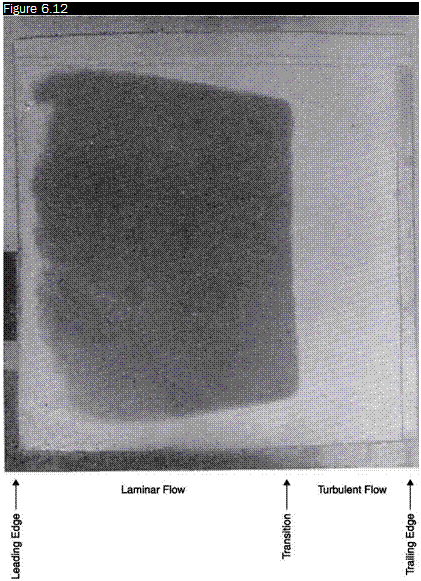The china clay method
This is the most effective evaporative method, developed at the National Physics Laboratory in the UK during the Second World War: the model is sprayed with a transparent cellulose adhesive containing suspended powdered kaolin (china clay); when the glue is dry, the model surface is accurately smoothed and becomes permanently white. If a liquid with a similar refractive index is sprayed onto the kaolin (with refractive index n = 1.56), the refraction of light in crystals that make up the layer is inhibited and the layer is therefore transparent. Turbulent zones, where the evaporation of the liquid is increased, turn white faster than the laminar zones (Figure 6.12). The choice of liquid is made according to its evaporation rate and the speed of the tunnel: at low speeds, methyl ethyl
 |
Boundary layer transition visualized with the china clay method
salicylate (n = 1.56) was successfully used; for speeds of few m/s, acetone was also used. As mentioned, the coverage of the model with the kaolin is permanent and can be used repeatedly for different tests.











